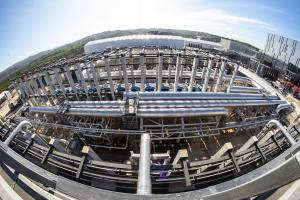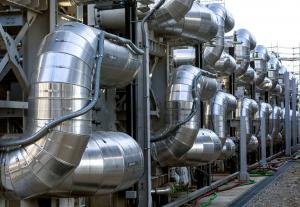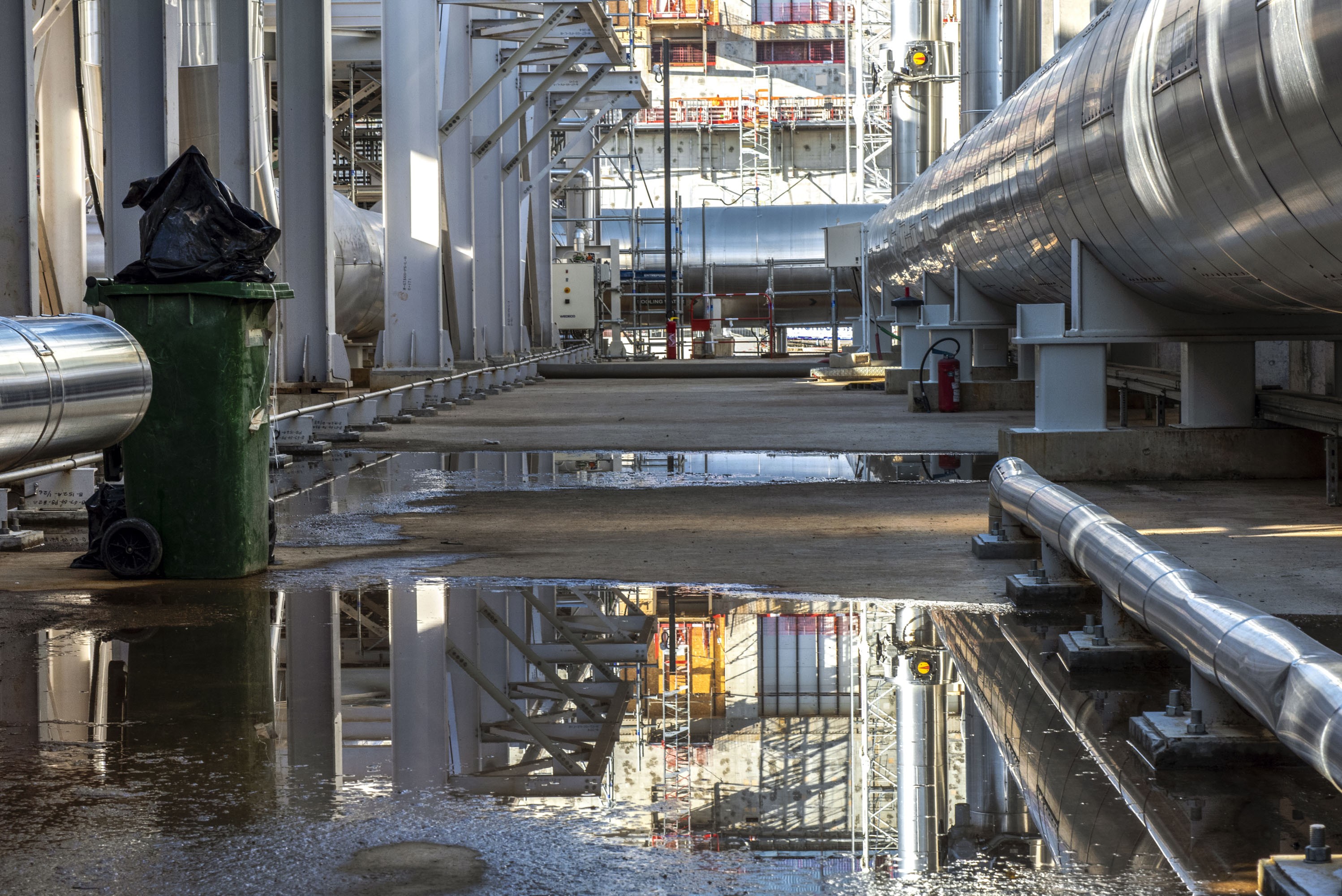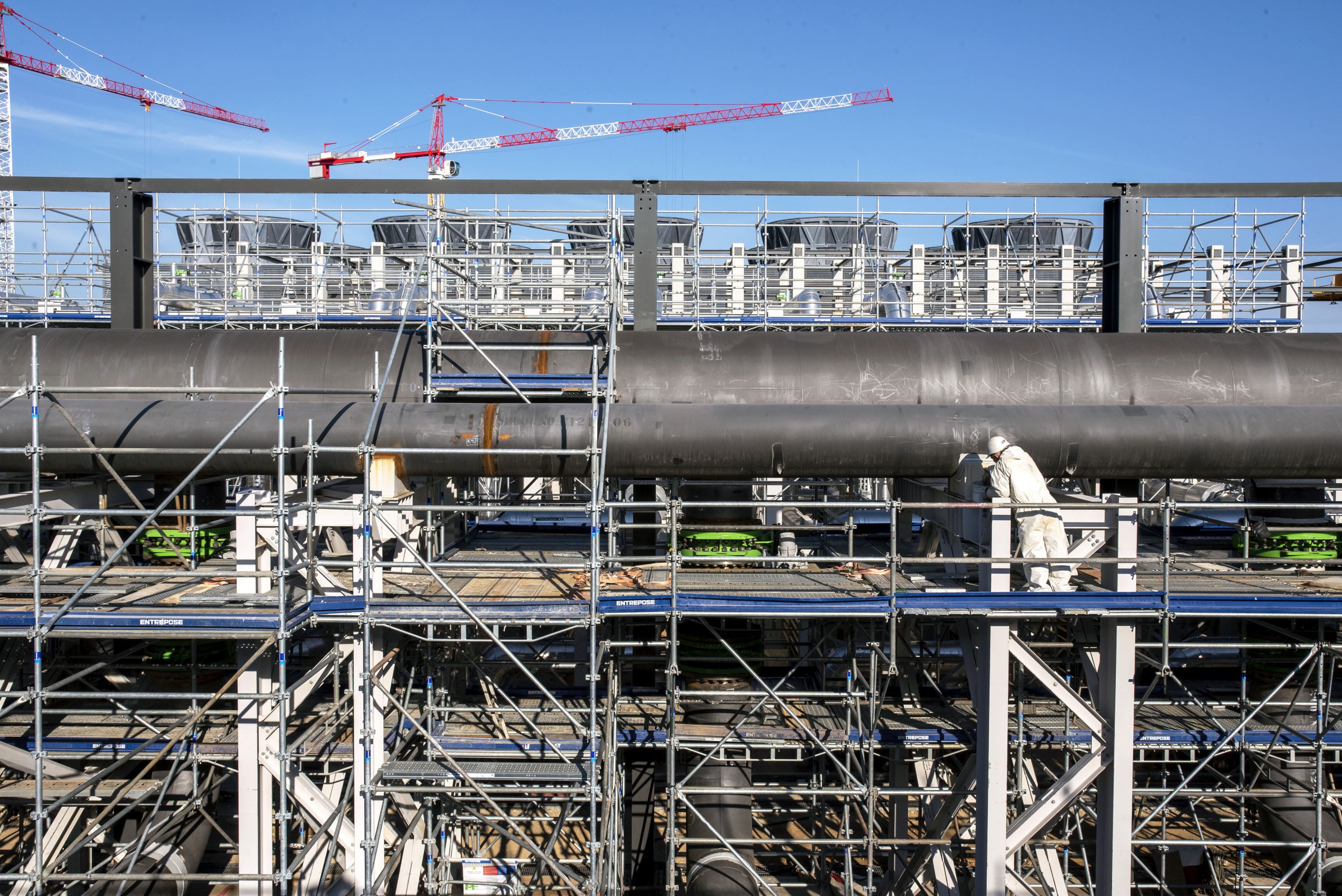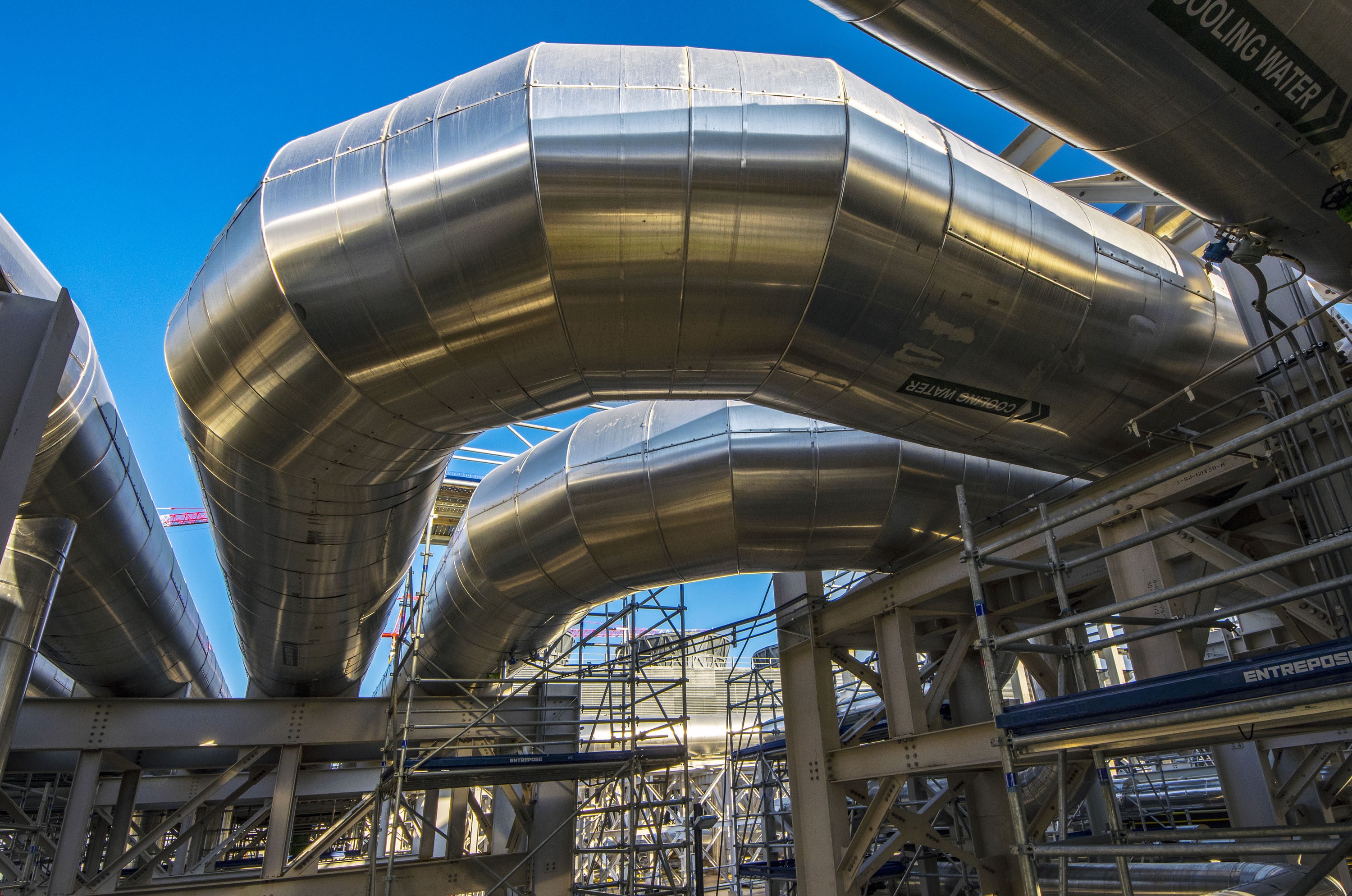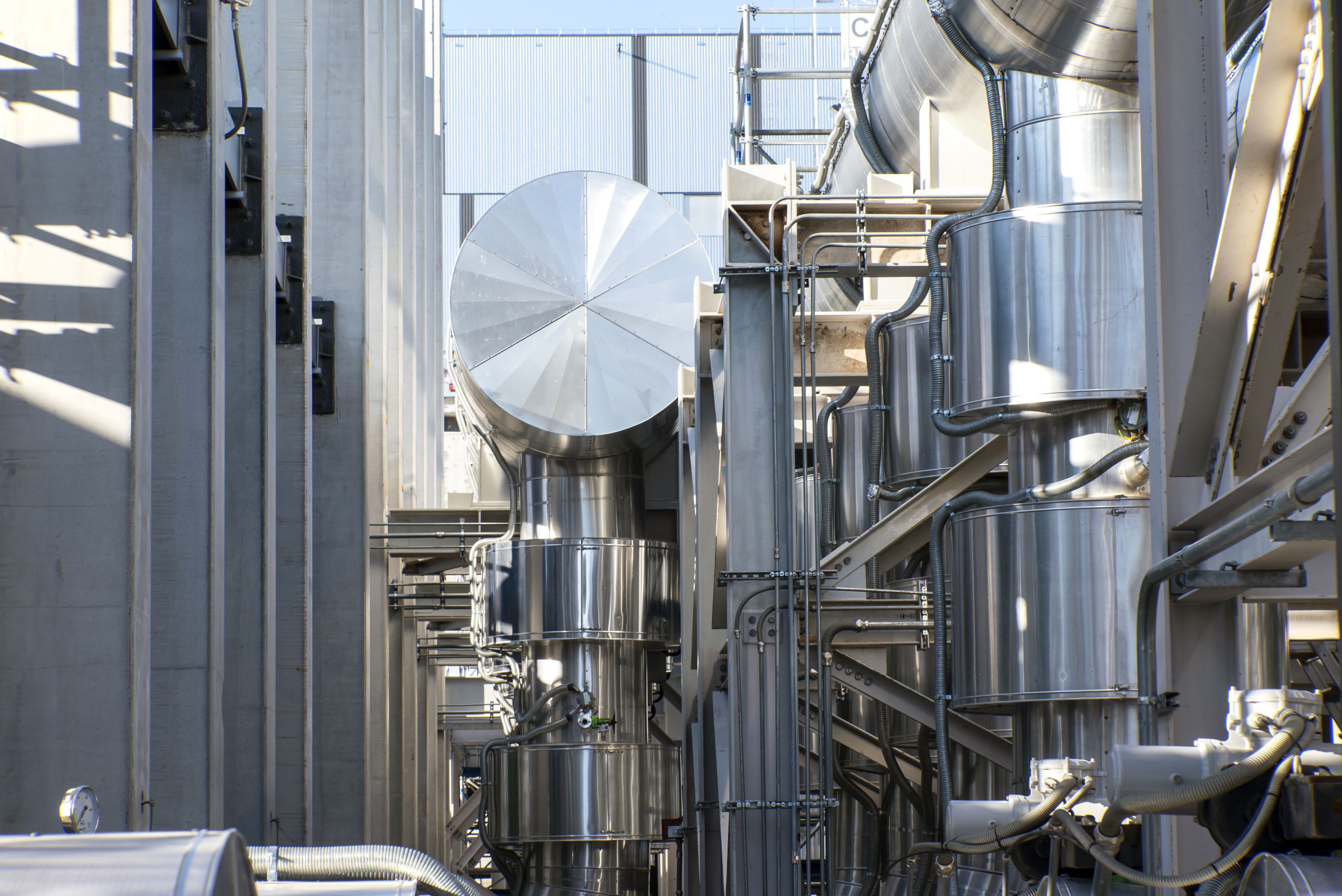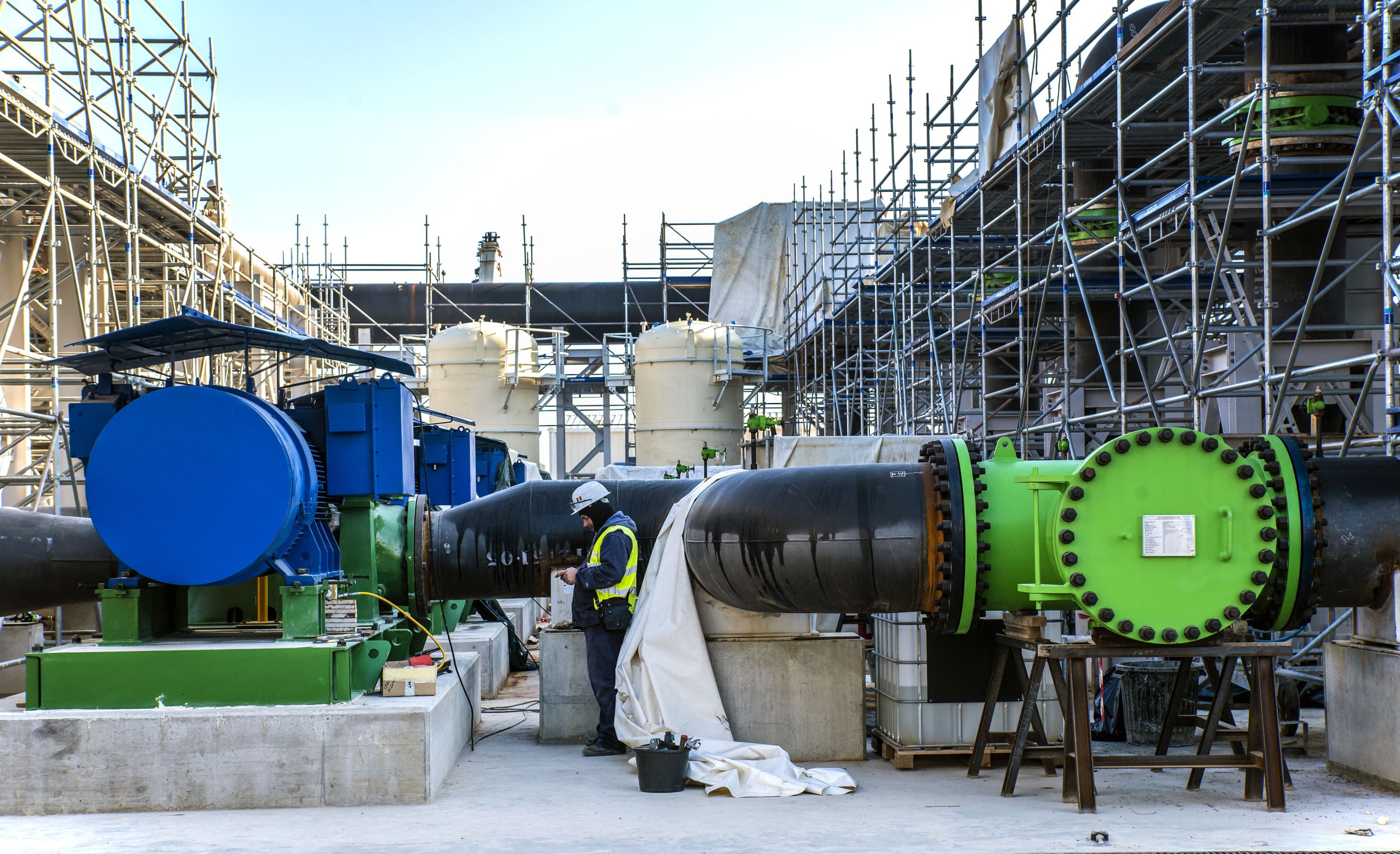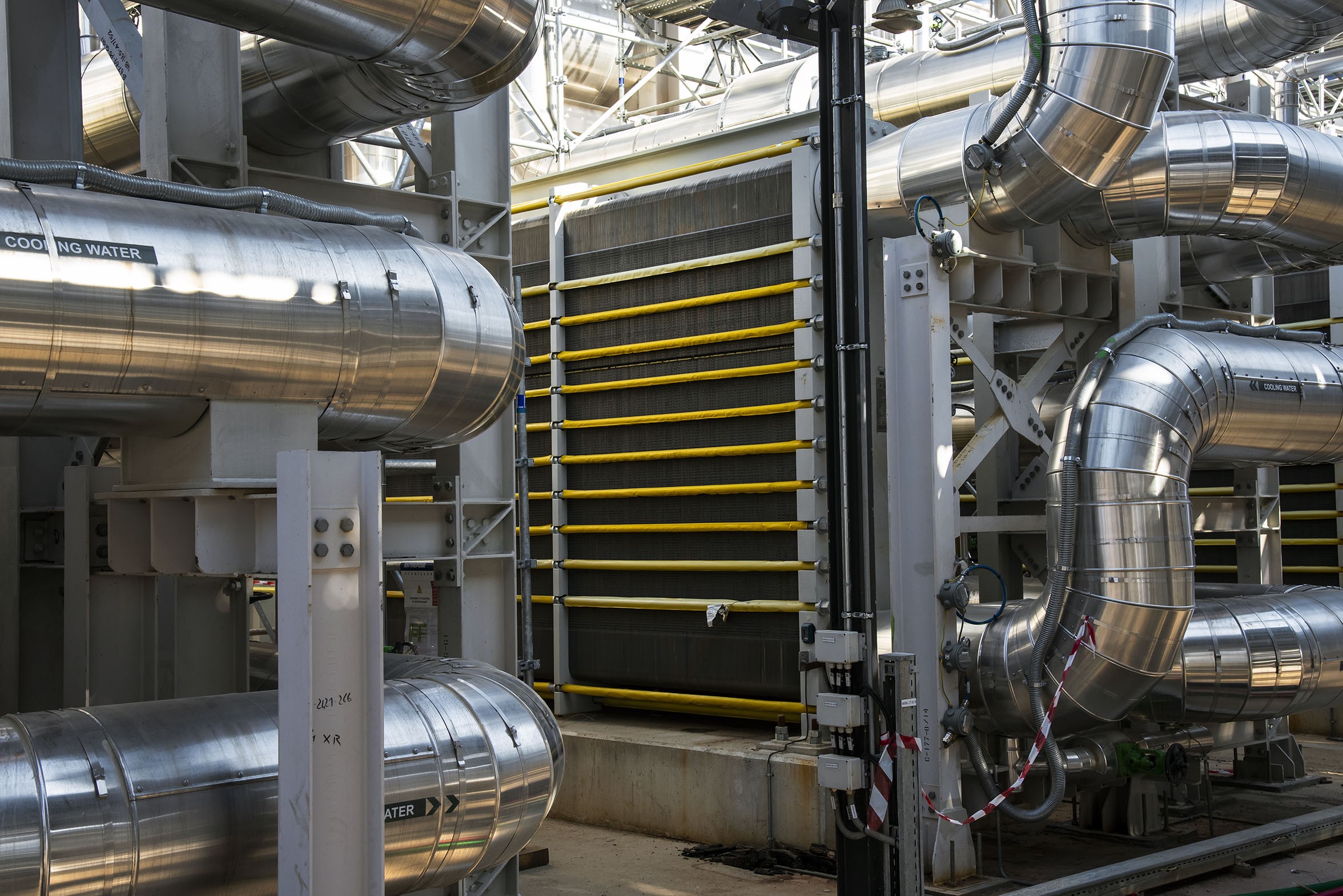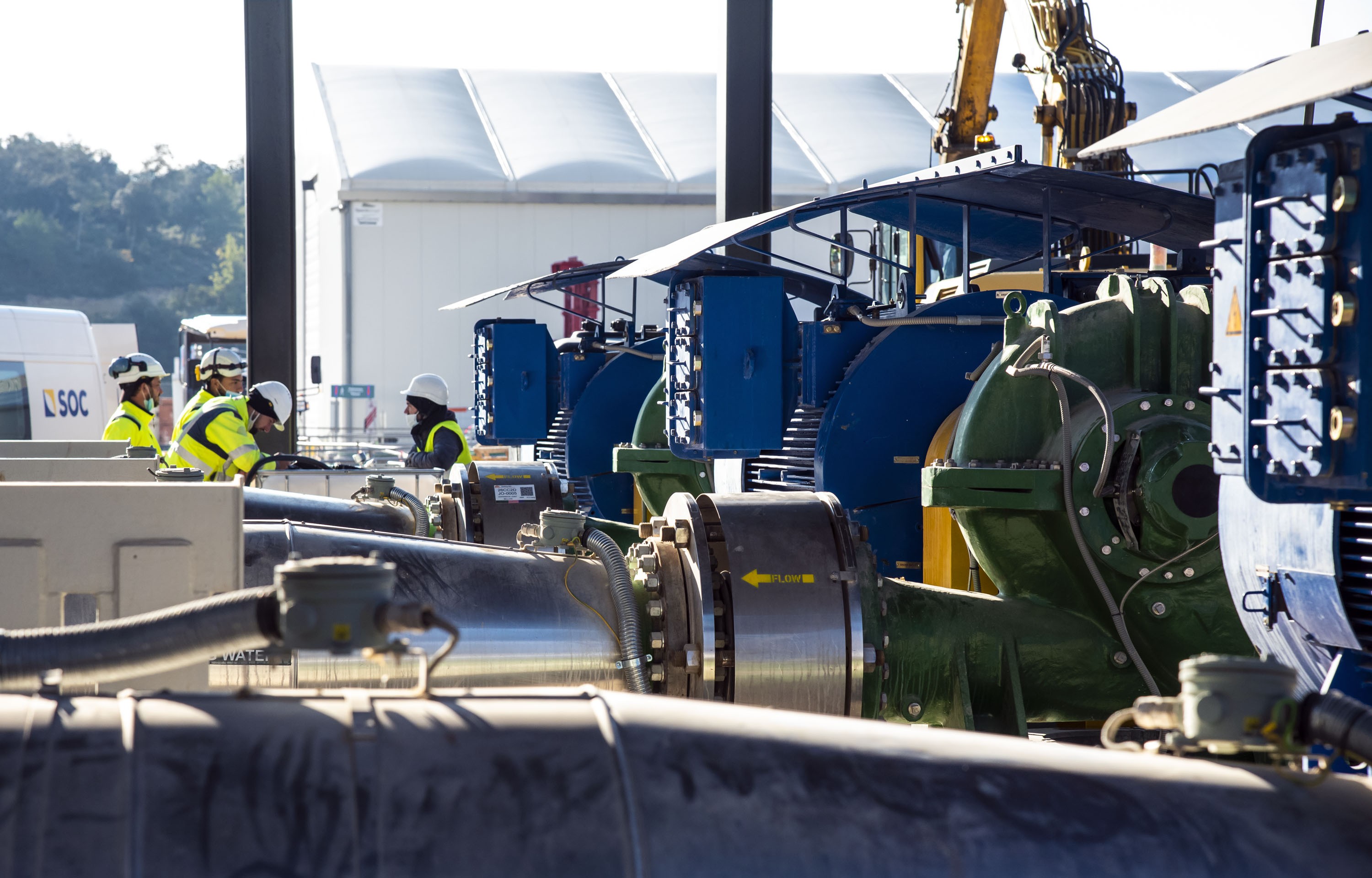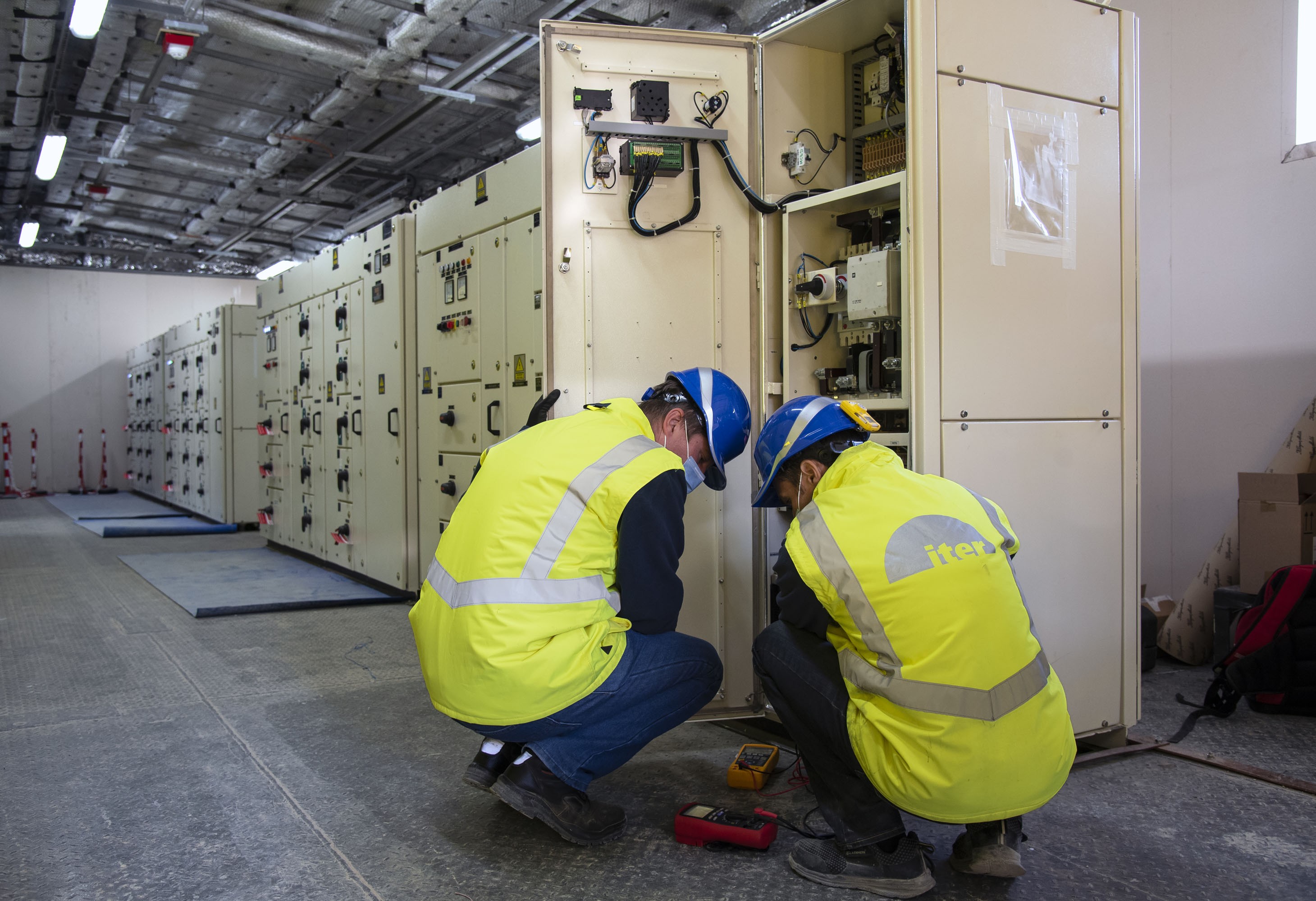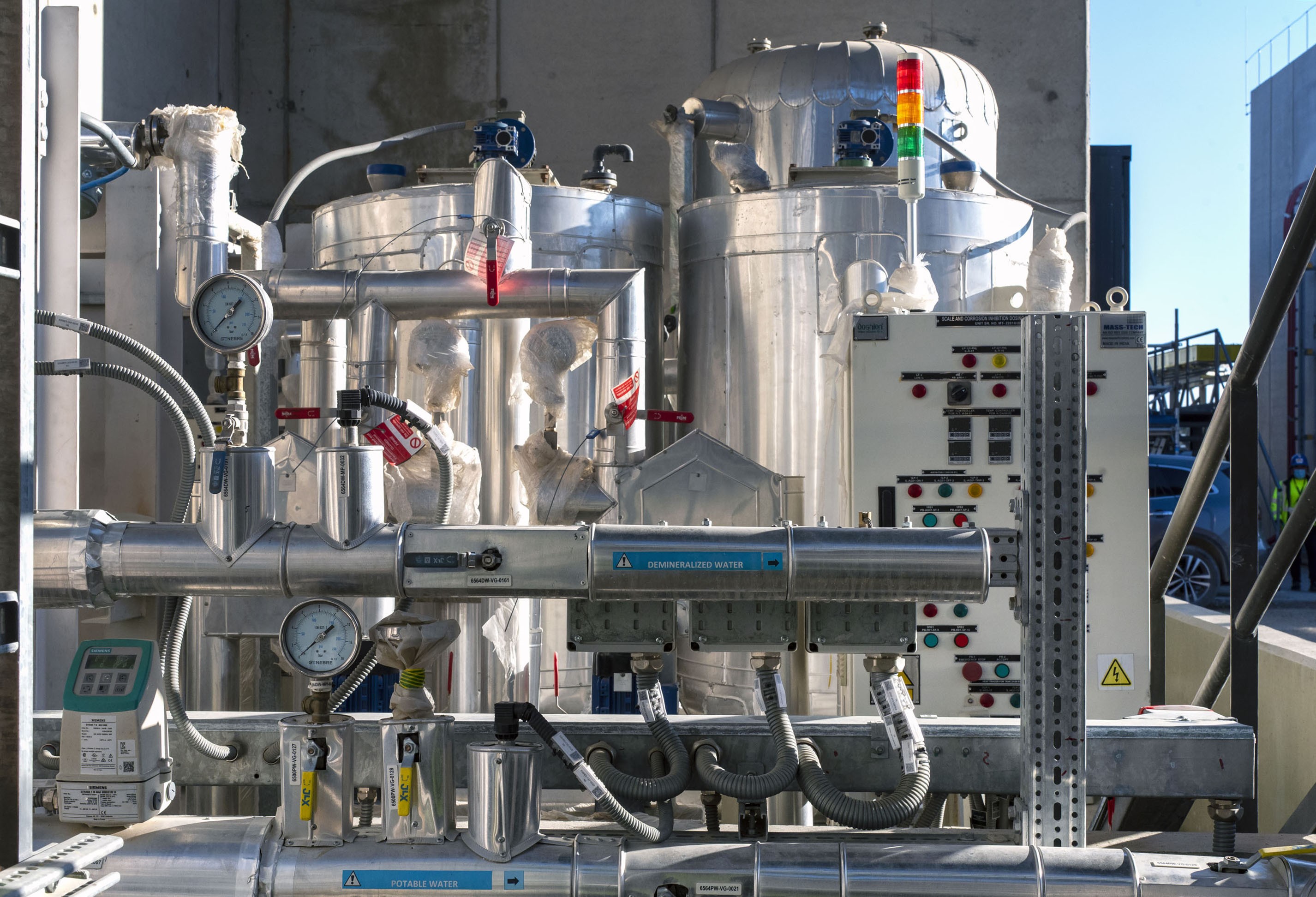Partners work in lockstep to keep ITER cool
Much of the cooling water plant is now ready for commissioning, thanks to a well-executed plan and close coordination among partners.
"Sooner or later, all heat from the tokamak, the plant and the ITER buildings is released into the atmosphere," says Alfonso Marquez, Section Leader for plant installation. "Cold water is pumped out to different clients and buildings, where it picks up the heat. The hot water is then circulated back to our plant, where it is cooled down through a series of steps."
Cooling water circulating under pressure through the ITER installation is responsible for removing the heat load from the ITER vacuum vessel, plasma-facing components, auxiliary and plant systems, and even ITER buildings.
Once it has collected the heat, the water is brought down in temperature progressively, circulating through the heat exchangers, the hot basin and finally the cooling towers of the cooling water plant before it is re-injected into the cooling circuit to begin all over again.
One of the principle challenges of the cooling plant was designing a system that could handle the huge, but intermittent head loads resulting from the operation of the tokamak, as well as the more "conventional" demands of the facility and plant.
A smart design reduces costs and uses less space
The maximum flow of water through the plant is 7,700 cubic metres of water per second—a rate that is reached only during a pulse. "Because ITER is an experimental reactor, the cooling water plant had to be designed for a pulse that lasts less than one hour," says Marquez.
"Instead of having a cooling tower two times bigger—that is more expensive and takes up more space—we have a smarter system, which has a smaller footprint and releases the heat load over time. If we had to serve a commercial reactor, where this peak power is maintained, the approach would have been very different. Heat would be generated constantly, and that heat wouldn't be released into the atmosphere—it would be used to generate electricity."
The cooling towers are designed to release a maximum of 500 MW. During a peak, rather than try to process all the heat contained in the hot water at once (1145 MW), some of it is stored in a 9-metre-deep basin, which serves as a heat sink. From there, it is pumped progressively into the cooling tower.
Like in any other cooling tower, the conditions are ideal for scaling, bacteria and legionella to grow. To prevent this, ozone and other chemicals are injected into the pipes and cooling tower basins.
A well-orchestrated project pays off
As part of its commitments to ITER, the Indian Domestic Agency is responsible for the design and fabrication of the heat rejection system. The European agency Fusion for Energy prepared the physical site for the system, excavating and creating the concrete basins and structures. The ITER Organization is responsible for installing all equipment.
Many of the components procured in India are too heavy or too large to be shipped in a single piece. The vertical pumps or the cooling tower fans, for example, were tested and commissioned in India before they were taken apart again and shipped in smaller pieces.
"This is what we call 'completely knocked down conditions,' meaning the components were disassembled before being shipped," explains Marquez. "Of course, the Indian Domestic Agency also sent us procedures for reassembly. Each of the 13 pumps consists of around 300 components, and we had about one million parts for the cooling towers. We had to involve a specialist contractor, a supplier from Europe, who supported us in assembly. It took 6 months to reassemble the pumps and another 18 months for the cooling towers."
"The project plan was designed so that work never stopped," explains Marquez. "This required a great deal of coordination among different partners. A deviation of two or three days would have led to down time, which costs a lot of money. Fortunately, the Indian Domestic Agency coordinated supplies to a precision of less than a week to keep the contractors here busy. This was challenging, but we succeeded."
"The first plant building that needs cooling service will be the cryoplant, so the Operation Division has begun commissioning that part of the plant first, "says Marquez. "The last thing that needs to be commissioned is the part that cools the ITER Tokamak. The Operation Division is expecting to finish all commissioning one year from now. The cooling water plant will be operational by the end of next summer."

